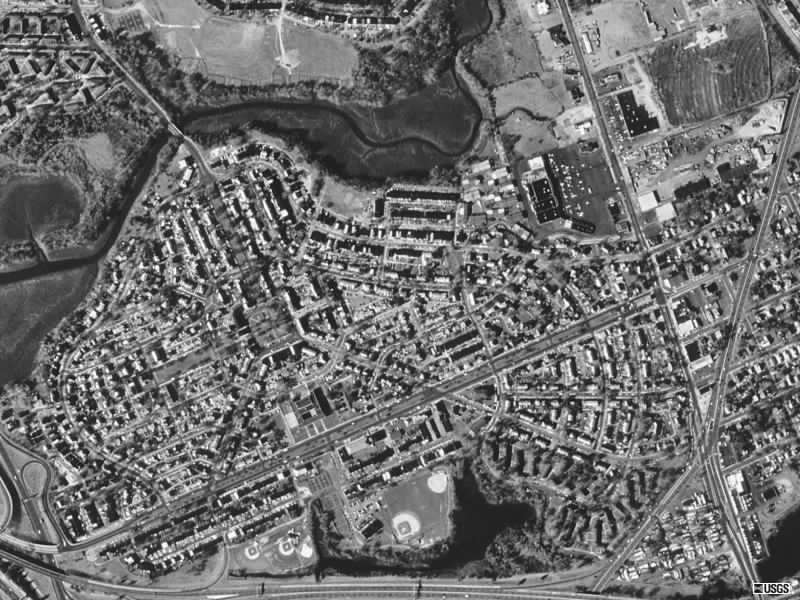 A Place Called YORKSHIP -
Electus Litchfield's Plan
A Place Called YORKSHIP -
Electus Litchfield's Plan A Place Called YORKSHIP -
Electus Litchfield's Plan
A Place Called YORKSHIP -
Electus Litchfield's Plan
The onset of World War I had seen New York Shipbuilding Corporation nearly quadruple in size, with three new self-contained shipyards appearing on the waterfront in a matter of two years. The influx of new workers saturated Camden's housing market and threatened to overwhelm its schools and transportation system.
The War Department's answer to the housing crisis was Yorkship Village--a planned community of a thousand homes just upstream from the shipyard on the South Branch of Newton Creek. The 225-acre parcel, then located in Haddon Township, had formerly been the Old Cooper Farmstead.
The village was designed by Electus Darwin Litchfield, who was influenced by the "garden city" developments popular in England at the time. He envisioned Yorkship Village as "a place of light rooms and clean yards, with adequate playgrounds and amusement fields; a place of beauty and appropriateness and cleanliness so great that a man returning from his daily toil would receive new strength and recreation; a place where the man who could save a fraction of his income would be able to obtain with it, for himself and for his children, a share of play and education, literature and music, and other uplifting things."
Litchfield's design included narrow, winding residential streets (soon to be tree-lined), a central village square, broad green boulevards, and brick duplexes and row homes with both front and back yards. Architecturally, the village is now considered an example of American Federal style. The original plan provided for a church, but not a school. The "village" character was further emphasized by the waterways bordering and isolating the development.
Construction began with ground-breaking on May 1, 1918. The United States Housing Corporation bore the estimated $11 million cost of construction, but required the local community to provide utilities, fire hydrants, and fire and police protection. The cost of those services was beyond the means of Haddon Township, which ceded YorkshipVillage to the City of Camden on July 8, 1918. It became Camden's 14th Ward.
Homes were initially rented to shipyard workers. After the war, however, the homes were sold to New York Ship employees at public auction. The three-day sale in 1921 saw approximately 1500 homes change hands at prices ranging from $800 to $1800.
The first school in Yorkship Village was located in a residential quadruplex. Construction of a proper village school began in 1919. When the name of the village was changed to Fairview in 1922, the school--along with the village square--continued to carry the name Yorkship.
Subsequent development on the periphery of Yorkship Village has stolen some of Litchfield's green spaces, and compromised the village's character and isolation. For example, in the 1950s the brick row homes of Cushing Road were added at the end of Republic Road, taking a bite out of the parkland along the North Branch of Newton Creek. Along the boundary marked by Mt. Ephraim Avenue, a large shopping center, steakhouse, and fast-food restaurants sprang up. Interstate 76 and 676 and the approaches to the Walt Whitman Bridge swallowed up land along the southern and western boundaries of the village, and adding around-the-clock highway noise to the quality-of-life equation. The former Babe Ruth League ballfield adjacent to Hull Road, along with the undeveloped land along Snake Alley, was transformed into a generic apartment complex. The grounds of Yorkship School, once grassy and open, have been completely paved over and surrounded with tall iron fences.
Despite those changes, however, Fairview has been more successful in resisting and escaping the decline of Camden than any other residential neighborhood. Professor Michael Lang, chairman of the department of urban studies at Rutgers University's Camden campus, has been inspired by Fairview's resilience to study the history of its underlying principles of design. "I was intrigued that this community, which was built in 1917 for shipyard workers, has held the loyalty of its citizens amidst the decline and the industrialization of the rest of the city," Lang says.

Fairview Today (USGS Photo, 25 Mar 1995)
At the 1998 national conference of the American Planning Association, the AICP National Planning Landmark award went to Yorkship Village, New Jersey, "regarded the best of 55 housing developments undertaken by the U.S. federal housing corporations during World War I."
(Last modified July 07, 2009)
![]() your
Yorkship memories to Michael Kube-McDowell, Class of '68
your
Yorkship memories to Michael Kube-McDowell, Class of '68